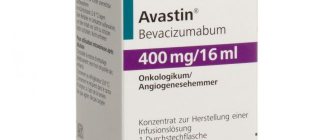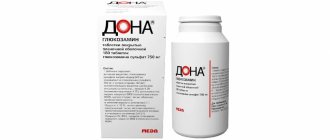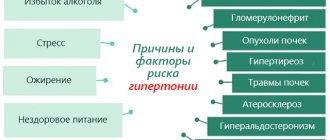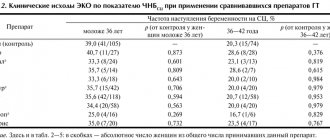The yellow solution called “Furacilin” has established itself as a powerful antiviral drug. The product for external and local use is used for various infectious lesions of the oral cavity and external defects of the body. The finely crystalline powder has a bitter taste, but is odorless, slightly soluble in water and alcohol and completely insoluble in ether. It belongs to the group of nitrofurans.
What diseases does Furacilin treat?
More often, an antimicrobial drug is prescribed when the throat hurts due to seasonal colds. It is recommended when a person is infected:
- staphylococcal sore throat;
- acute or chronic form of tonsillitis;
- glossitis (local inflammation of the tongue);
- stomatitis (damage to the mucous membrane in the mouth);
- gingivitis (infection of the gums).
Furacilin is also prescribed for purulent otitis, conjunctivitis, bedsores, bacterial and fungal infections of the nasal cavity and other infectious diseases.
For sore throat
In acute tonsillitis, the tonsils become inflamed. The disease is accompanied by:
- high temperature;
- sore throat;
- redness of the mucous membrane;
- swelling of the tonsils;
- accumulation of plaque on the tonsils.
In severe cases, infusion therapy is used and immunoglobulins are administered. In acute tonsillitis, purulent plaque always forms in the oral cavity. It is removed mechanically. Rinsing with furatsilin solution relieves pain. The procedure helps to destroy microbes, and the healing process is shortened.
For pharyngitis
Inflammation of the lymph and tonsils is accompanied by a sore throat. Treatment with furatsilin up to three times a day is prescribed to relieve inflammation and acute symptoms along with other antiseptics.
Buy Furacilin Avexima effervescent tablets for solution 20 mg No. 10 in pharmacies
Dosage form
Round, flat-cylindrical tablets, from light yellow to yellow with inclusions, with a chamfer on both sides. Tablet surface roughness is acceptable.
Instructions
Locally: externally in the form of a 0.02% freshly prepared aqueous solution: immediately before use, one tablet (20 mg of furatsilin) is dissolved in 100 ml of distilled water at room temperature or in warm boiled water.
Externally: in the form of an aqueous 0.02% solution - irrigate wounds, apply wet bandages.
Locally: blepharitis, conjunctivitis - instillation of an aqueous 0.02% solution into the conjunctival sac. Osteomyelitis after surgery - washing the cavity, followed by applying a wet bandage. Empyema of the paranasal sinuses (including with sinusitis) - washing the cavity, empyema of the pleura - after removing the pus, wash the pleural cavity and inject 20-100 ml of an aqueous 0.02% solution.
To wash the urethra and bladder, use an aqueous 0.02% solution with an exposure of 20 minutes.
For tonsillitis, stomatitis, gingivitis - rinse the mouth and throat with warm 100 ml of an aqueous 0.02% solution 2-3 times a day.
The duration of treatment is as indicated, depending on the nature and location of the affected area. If symptoms persist, it is recommended to consult a doctor.
Externally. Irrigate purulent wounds, bedsores, II-III degree burns, minor skin injuries (including abrasions, scratches, cracks, cuts) and apply wet bandages.
If there is no improvement after treatment, or symptoms worsen, or new symptoms appear, you should consult your doctor.
Use the drug only according to the method of use and in the doses indicated in the instructions. If necessary, please consult your doctor before using the medicine.
Compound
Composition per tablet:
active substance:
nitrofural (furacilin) - 20 mg;
Excipients:
tartaric acid - 375 mg, sodium bicarbonate - 299 mg, sodium carbonate - 325 mg, sodium chloride - 100 mg, macrogol 20000 - 65 mg, medium molecular weight povidone - 16 mg.
Pharmacotherapeutic group
Antimicrobial agent - nitrofuran
Storage temperature
From 2C to 25C
Special conditions
The drug does not affect the ability to drive or exercise
Drug interactions
Not studied.
Pharmacodynamics
Antimicrobial agent, nitrofuran derivative. Bacterial flavoproteins, by reducing the 5-nitro group, form highly reactive amino derivatives that can cause conformational changes in proteins (including ribosomal ones) and other macromolecules, leading to the death of bacteria. Active against gram-positive and gram-negative bacteria, incl. Staphylococcus spp., Streptococcus spp., Escherichia coli, Clostridium perfringens. Resistance develops slowly and does not reach a high degree.
Pharmacokinetics
When applied externally and locally, little is absorbed.
Indications
As part of complex therapy:
Locally: acute tonsillitis (angina), stomatitis, gingivitis, blepharitis, conjunctivitis, osteomyelitis, empyema of the paranasal sinuses and pleura; urinary tract infections - rinsing the cavities.
Externally: purulent wounds, bedsores, II-III degree burns, minor skin damage (including abrasions, scratches, cracks, cuts).
Contraindications
Hypersensitivity to nitrofural, nitrofuran derivatives and/or other components of the drug, bleeding, allergic dermatoses, severe renal dysfunction.
Use during pregnancy and breastfeeding
Use during pregnancy and breastfeeding is possible if the expected benefit to the mother outweighs the potential risk to the fetus or child.
Overdose
No cases of overdose have been reported.
Side effects
Allergic reactions are possible: skin itching, dermatitis.
If any of the side effects indicated in the instructions get worse, or you notice any other side effects not listed in the instructions, tell your doctor.
Impact on the ability to drive vehicles and machinery
The drug does not affect the ability to drive or engage in other potentially hazardous activities that require increased concentration and speed of psychomotor reactions.
How to make a solution of furatsilin
Ready-made liquid cannot always be bought at a pharmacy. More often Furacilin is found in tablets. The treatment regimen, duration, and dosage form are determined by the doctor, and each patient’s prescriptions are different. The doctor takes into account individual characteristics. Usually 1 – 2 tablets are crushed to a powder and stirred in a glass of warm water.
For faster dilution, it is recommended to use boiling water. For stomatitis, pharyngitis, tonsillitis, a solution is prepared to rinse the oropharynx: per 100 ml - 2 mg (1 tablet) of furatsilin. The duration depends on the nature of the localization of the infection. Take a small sip of the prepared product, throw back your head and rinse your larynx for 2 – 3 minutes.
Furacilin Avexima tablet effervescent d/prig solution for local and external use. strip 20 mg N10
Registration Certificate Holder
AVEXIMA (Russia)
Dosage form
Medicine - Furacilin Avexima
Description
Effervescent tablets for preparing a solution for local and external use
from light yellow to yellow with inclusions, round, flat-cylindrical in shape, with a chamfer on both sides; surface roughness is allowed.
1 tab.
nitrofural (furacilin) 20 mg
Excipients
: tartaric acid - 375 mg, sodium bicarbonate - 299 mg, sodium carbonate - 325 mg, sodium chloride - 100 mg, macrogol 20000 - 65 mg, medium molecular weight povidone - 16 mg.
2 pcs. — cellless contour packages (5) (strips) — cardboard packs. 10 pieces. - plastic tubes (1) - cardboard packs. 15 pcs. - plastic tubes (1) - cardboard packs. 20 pcs. - plastic tubes (1) - cardboard packs. 25 pcs. - plastic tubes (1) - cardboard packs. 30 pcs. - plastic tubes (1) - cardboard packs. 10 pieces. — polymer jars (1) — cardboard packs. 15 pcs. — polymer jars (1) — cardboard packs. 20 pcs. — polymer jars (1) — cardboard packs. 25 pcs. — polymer jars (1) — cardboard packs. 30 pcs. — polymer jars (1) — cardboard packs.
Indications
Purulent wounds, bedsores, ulcers, II and III degree burns, osteomyelitis, pleural empyema, anaerobic infection of the wound surface, boil of the external auditory canal, empyema of the paranasal sinuses.
Contraindications for use
Allergic dermatoses, hypersensitivity to nitrofural and other nitrofuran derivatives.
pharmachologic effect
Antimicrobial agent, nitrofuran derivative. Active against gram-positive bacteria: Staphylococcus spp., Streptococcus spp., Bacillus anthracis; gram-negative bacteria: Escherichia coli, Shigella spp., Salmonella spp. (including Salmonella paratyphi).
Dosage regimen
For purulent wounds, bedsores, ulcers, burns, to prepare the granulating surface for skin grafting and for applying a secondary suture, irrigate the wound with an aqueous solution of nitrofural and apply wet bandages. In case of osteomyelitis, after surgery the cavity is washed with an aqueous solution of nitrofural and a wet bandage is applied. In case of pleural empyema, the pus is sucked out and the pleural cavity is washed, followed by the introduction of 20-100 ml of an aqueous solution of nitrofural into the cavity.
Side effect
Maybe:
local allergic reactions, dermatitis.
special instructions
To prepare an aqueous solution, 1 part of nitrofural is dissolved in 5000 parts of isotonic sodium chloride solution or distilled water. The prepared solution can be stored for a long time.
Can children rinse their mouths?
Children from the age of six can already independently perform many hygiene procedures, including rinsing their throats. But it is better for adults to be present so that the child does not swallow the contents. If he has not mastered sanitary skills, then antibacterial lozenges are recommended instead of rinsing.
Mechanical treatment is used for a one-year-old baby. From two years old, the baby is given a rinse. A weak solution of furatsilin is taken into a special “bulb” for douching. The head is slightly tilted forward and the mouth is sprayed.
A safe method for treating the oral cavity for children is inhalation with Furacilin. Sessions cannot be performed without agreement with the pediatrician. If approved by a doctor, inhalations are done using a fresh solution each time. Depending on the degree of the disease, the doctor prescribes the number of sessions and the individual concentration of the drug. Its saturation should be low.
Trade names
The active substance in known dosage forms is nitrofural (a word synonymous with “furatsilin”). Pharmaceutical companies now produce antimicrobial agents under different names:
- "Chlorhexidine";
- "Kombutek";
- "Lifuzol";
- "Miramestin";
- "Betadine";
- "Antiseptol".
There are also other names. The drugs are over-the-counter and it is recommended to follow general recommendations on storage conditions for drugs and use.
Furacilin Avexima effervescent tablet for local/external solution approx 20 mg x10
ATX code: D08AF01 (Nitrofural) Active substance: nitrofural (nitrofural) Rec.INN registered by WHO Dosage form FURACILIN AVEXIMA tab. effervescent for preparation. size for places and outside Applications of 20 mg: 10, 15, 20, 25 or 30 pcs. reg. No.: LP-002980 from 04/29/15 - Valid Release form, composition and packaging Effervescent tablets for the preparation of a solution for local and external use from light yellow to yellow in color, interspersed, flat-cylindrical in shape, with a chamfer on both sides.
1 tab. nitrofural 20 mg
Excipients: tartaric acid - 300 mg, sodium bicarbonate - 390 mg, sodium carbonate - 330 mg, sodium chloride - 100 mg, macrogol 4000 - 60 mg.
2 pcs. — cellless contour packages (5) (strips) — cardboard packs.
Clinical-pharmacological group: Antibacterial and antiprotozoal drug, nitrofuran derivative, for external and local use Pharmaco-therapeutic group: Antimicrobial agent, nitrofuran Pharmacological action Antimicrobial agent, nitrofuran derivative. Active against gram-positive bacteria: Staphylococcus spp., Streptococcus spp., Bacillus anthracis, gram-negative bacteria: Escherichia coli, Shigella spp., Salmonella spp. (including Salmonella paratyphi). Indications Purulent wounds, bedsores, ulcers, second and third degree burns, osteomyelitis, pleural empyema, anaerobic infection of the wound surface, boil of the external auditory canal, empyema of the paranasal sinuses. ICD-10 codes ICD-10 code Indication J01 Acute sinusitis J86 Pyothorax (pleural empyema) L02 Skin abscess, boil and carbuncle L89 Decubital ulcer (bedsore) M86 Osteomyelitis T30 Thermal and chemical burns of unspecified localization T79.3 Post-traumatic wound infection, not classified in other sections
Dosage regimen For purulent wounds, bedsores, ulcers, burns, to prepare the granulating surface for skin grafting and for applying a secondary suture, irrigate the wound with an aqueous solution of nitrofural and apply wet bandages. In case of osteomyelitis, after surgery the cavity is washed with an aqueous solution of nitrofural and a wet bandage is applied. In case of pleural empyema, the pus is sucked out and the pleural cavity is washed, followed by the introduction of 20-100 ml of an aqueous solution of nitrofural into the cavity. Side effects Possible: local allergic reactions, dermatitis. Contraindications for use: Allergic dermatoses, hypersensitivity to nitrofural and other nitrofuran derivatives. Special instructions To prepare an aqueous solution, 1 part of nitrofural is dissolved in 5000 parts of isotonic sodium chloride solution or distilled water. The prepared solution can be stored for a long time.




